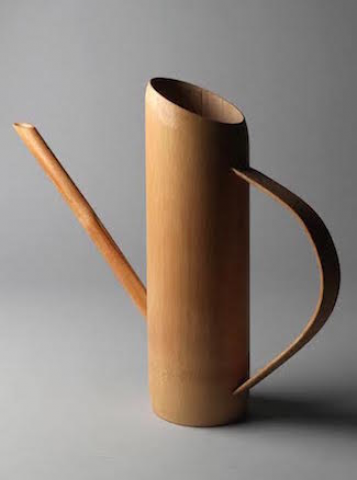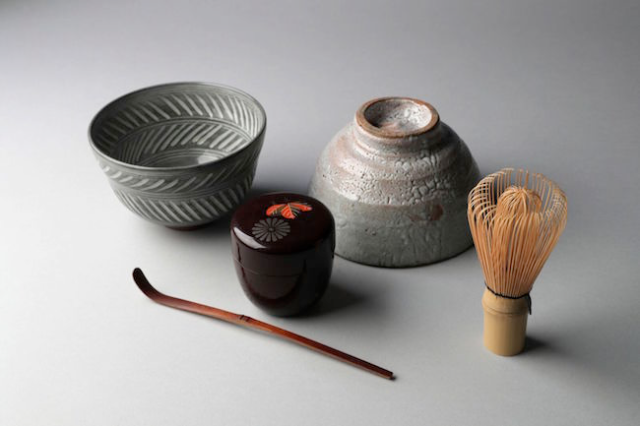The Aesthetics of Practical Elegance
Objects of Use and Beauty in Japanese Culinary Tools
By: Mark Favermann - Jun 20, 2018
The notion of form following function reverberates throughout Japanese design aesthetics, informing its traditions and use of materials as well as contemporary production techniques. Rooted in ancient ideals, the Japanese aesthetic is propelled by a set of guidelines that are mindful of transience and committed to the beauty of profound simplicity and natural asymmetry, the grandeur of patina and aging.
Japanese cultural and aesthetic norms are dedicated not only to beauty, but to what is considered to be appropriately tasteful. In the West, aesthetics is categorized in the realm of philosophy. In Japan, aesthetics is not just a matter of abstract discussion — it is seen as an integral part of daily life. Function and form embraces a rich, intertwined goal: it is concrete, multisensory, and emotional.
The ritualistic nature of Japanese food preparation and cooking utensils epitomizes this ideal. The experience of food is about more than satisfying the appetite: it is multilayered. This complexity is underscored by the cultural belief that we “eat with our eyes.” That means the tools that produce food, or that we use to eat it, should provide aesthetic pleasure and delight us with their visual charm.
This appealing and thoughtful exhibit at the Fuller Craft Museum showcases a wonderful assemblage of diverse utensils and accessories used in domestic as well as professional kitchens. The show celebrates the imaginative power and elegance of these particular works — and of Japanese culture in general. Not only do these objects inspire our curiosity, but they assert, with impressive grace, universal human connections.
This joyful exhibit reflects the extensive experience of the country garnered by its collaborating curators, Debra Samuels and Merry White. Each has spent several decades living in, or touring, Japan. Samuels has visited Japan since 1972; White has been traveling there since 1963.
Each has written books on Japanese cuisine. A contributor to the Boston Globe Food section for many years, Samuels teaches on Japanese food and culture in Europe and the U.S. Professor White teaches anthropology at Boston University; her extensive research has informed her publications on various aspects of Japanese culture. Over the years, the pair have amassed an extensive collection of Japanese objects related to food.
There are a number of small design masterpieces, subtle and elegant, sprinkled throughout the exhibit. A particular delight: traditional Japanese design applied to contemporary products can be stunning. Many of the kitchen objects and utensils shown in this exhibition beautifully illustrate this paradox — the old is new again.
Unlike the categorization in the West and in China, the Japanese don’t distinguish between art and craft. Works in all media and materials are valued — crafts are equal to painting, sculpture, and prints. In fact, Japan honors its greatest crafts creators as Living National Treasures. These masters create tea bowls, bamboo baskets, knives, and other tools and utensils. They are revered on the same level as Japan’s best painters and sculptors whose works are shown in museums.
This exhibit includes objects fabricated in materials ranging from hard and soft wood as well as metal, stone, bamboo, grasses, ceramic, silicone, fiberglass, and plastic. Taken together, the pieces display the variety and functional beauty of traditional tools used hundreds of years ago as well as examples of what can be found in a contemporary Japanese kitchen. The culinary equipment on view includes pitchers, kettles, knives, bowls, spoons, paddles, whisks, graters, chopstick rests/holders, and various décor pieces.
In addition, there are Alex Griswold’s stunning videos of traditional craftspeople at work in their workshops in Japan. Their craftsmanship, the poetry of their movements — via the shaping of a clay pot, the forging of a steel knife, or the fabrication of a grater — makes for compelling viewing of a spectacularly nuanced art.
A number of objects in the show are notable for the charm of their beauty. These include a sculptural bamboo pitcher (or takesei mizushashi) from the collection of Peter and Susan Grilli. This exquisite object visually shouts form following function. It is much more than a lovely, stand-alone sculpture — the object’s powerful presence also piques our curiosity about how it was so smoothly fabricated.
Another memorable piece is a traveling tea ceremony set box (or chabako). Taken from the collection of White, this bamboo, ceramic, paulownia wood, and lacquer multi-unit set includes a tea bowl, tea caddy, tea scoop, tea whisk, water jug and wastewater container, water ladle, tea cloth, and a rest for the lid of a teakettle. This is a visually ravishing collage of colors, textures, and forms.
Selected from the collection of the Korin Japanese Trading Corporation, a Soba noodle–cutting knife (or sobabocho) is eloquently minimalist, proffering a sleek marriage of functional simplicity and beauty. Though surprisingly small (from the collections of Samuels and White), a three-clay grooved mortar (or suribachi) and sansho wood pestle are also elegantly designed but supremely functional.
Reminiscent of American Shaker stacking boxes, the show’s variously sized bentwood bento boxes celebrate the austerely attractive. There are a number of comparative utensils, old and new, that display a fascinating juxtaposition of the traditional (two wooden spoons, three wooden ladles) and the modern (a metal spoon and the high tech shamoji, wonderful plastic dimpled rice paddles). There is even a party bento made from black plastic.
One of the delights of Objects of Use and Beauty: Design and Craft in Japanese Culinary Tools is that the exhibition’s tools and accessories are all accessible, human, and down-to-earth. They fit the hand — and sometimes the mouth. This is beauty made to be utilized: objects that are functional, elegant, and somehow even emotionally satisfying.
This article was previously published in Arts Fuse and is re-published here at their permission.



